Evacuation of the Serbian army
The stubborn resistance of the Serbian army, unexpected for the German command, demanded reinforcement from the West German front. The Alpine corps, especially suitable for conducting combat operations in conditions of highly rugged terrain and off-road, was pulled up to Banat. However, before he began to act, the introduction of small German reserves managed to push the Austro-Hungarian troops forward at Orsov, breaking through the Serbian defense and thus open the way to Bulgaria along the r. The Danube.
Since the Alpine corps was no longer needed on this front, the commander of the Austro-German assault group, Mackensen, decided to use it on the right wing of the 3 of the Austro-German army in order to accelerate its forward movement. The 11 of the German army, in turn, also had to increase the pressure on the Serbs to help the 1 of the Bulgarian army, which at the beginning of the operation faced strong resistance from the Serb forces in well-equipped positions.
By October 25 The 1915 headquarters of the Serbian army moved from Kragujevac to Kruševac. 5 November fell Nish. 2-I Bulgarian army crossed the line Leskovac, Vranja, Kumanovo, striking the main blow in the direction of Pristina; in the south it was occupied by the area of Veles. The 1-I Bulgarian army occupied the region east of Aleksinats with the main forces, and the right wing adjoining the 11 of the German army and the Austrians who crossed the r. Danube at Orsov, reached Parachin. At this time, the eastern part of the 11 of the German army was located in the valley. Moravs southwest of Parachin. From here the front of the 11 and 3 armies extended through Kraljevo to Chachak. Even further to the west, Austro-Hungarian landshturmenian brigades, which crossed the Lower Drina, were located near Užice, and the Austro-Hungarian division was stationed east of Vyšehrad.
The Serbian army, having lost its fortified boundaries and suffered heavy losses in fierce battles, retreated along the whole front in a general direction on the elevated plateau of the Kosovo field near Pristina. Particularly stubborn resistance of the Serbs only to the southern wing of the 2 of the Bulgarian army, whose rapid movement threatened to intercept the Serb withdrawal routes to Albania and the surrounding part of the army.
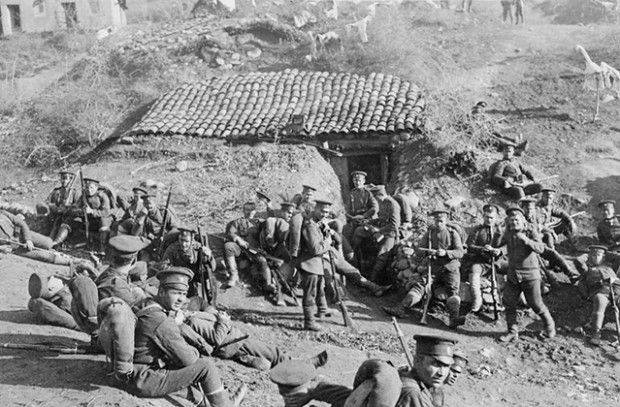
Bulgarian troops in camp
Serbia was already a complete disaster. The army was still trying to fight back, but the retreat had lost order. After the atrocities and violence of the last Austrian invasion (in the 1914 campaign), there were many refugees. Voivode Traveler made a difficult, but the only right decision - to save the remaining troops and leave through Albania and Montenegro to the Adriatic Sea. The Serbs hoped to keep the mountain passes, and on the coast with the help of the allies to restore strength, to receive reinforcements and go on the offensive.
Began the tragic outcome of Serbia. Together with the troops, civilians also fled. On the broken, autumn roads that torrents turned into a marsh, officials, peasants, townspeople, women, and children walked with the soldiers. A contemporary of events wrote: “Now, when the enemy comes from all sides, the flight takes place day and night, on horseback, on railways, on foot. Numerous refugees do not have a roof over their heads, nobody gets even a slice of bread. The kids, half naked and barefoot, disappear into the cold nights. All the taverns and cellars are full. " In the mass of refugees, King Peter Karageorgievich walked. Carried on the hands of the sick Commander Violin. The remnants of the army mixed with the refugees and lost the remnants of combat capability.
The Austro-German troops were no longer holding back not the Serb resistance, but the lack of developed communications and impassable dirt on the existing roads. They could not at least somehow maneuver and surround the already defeated Serbian army. The occupiers committed atrocities in the captured areas. Particularly distinguished were the Germans Mackensen, who methodically exterminated all the remaining Serbs. Bulgarians to their neighbors Slavs were more humane, civilians are not cut. However, this did not mean salvation; many were mowed down by hunger and disease in war-ravaged areas.
The attempt by the Central Powers to speed up the attack of the 2 of the Bulgarian army by transferring units of the 1 of the Bulgarian army to it did not have any success, since the reinforcements of this army were late and the routes of communication were very complex and the rear of the Bulgarians was poorly prepared. November 3 Mackensen's troops received a directive to continue operations; the same instruction was given to the 2 of the Bulgarian army, which was not directly subordinated to Mackensen. The Allies planned to accelerate the columns of the 3 of the Austro-German army on the road from Kraljev to Rashka and the Bulgarians through Pristina in the direction of Mitrovica to impede the withdrawal of the Serbs to Albania. Significant forces of the 11 Army were redeployed to the second echelon, locating for rest in the valleys of Serbia, and partially delayed into Banat.
However, the remaining forces were enough to repel 22 in November with a counterstrike from the Serbian army in the region of Ferižovits, which was directed against the right wing of the 2 of the Bulgarian army. At the end of November and 1 of December, parts of the Serbian army were defeated by Bulgarian troops advancing on Prizren, while the Serbian troops were partly captured and partly scattered. Were also defeated the weaker Serb units, which faced the vanguards of the 3 and 11 armies. As a result, the Serbian army was finally driven out of Serbia. The Bulgarian troops continued the pursuit of Serbs by small detachments to Dyakovo, Dibra, captured Ohrid and sent a convoy to the city of Monastery. Small German units were attached to this column so that in case of contact with the Greek army, they would have on hand a mediator acceptable to the Greeks. To the north of the Bulgarians, the 3-I Austro-German army, having rejected the Montenegrin troops, advanced on Ipek, Rozhay, and Belopolye.
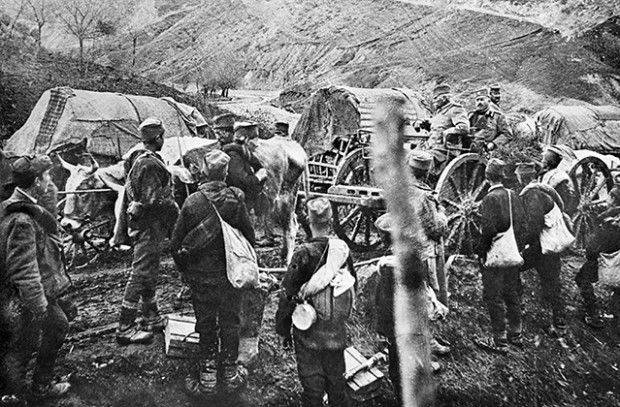
The retreat of the Serbian King Peter I Karageorgievich (on the left carriage) and the Serbian troops in November 1915
Actions of the Entente countries
While Serbia waged an unequal struggle with the Austro-Germans and Bulgarians, the attention of England and France was largely attracted by their joint operation to seize the Dardanelles. After the failure of the operation to seize the strait and the breakthrough to Constantinople, the Allies were more interested in the issue of the withdrawal of troops from the Galipol Peninsula. At the same time, part of the Allied Command proposed to evacuate the troops not only from the pouring zone, but also Thessaloniki, in order to transfer troops to the defense of the Suez Canal and Egypt. Russia was against it, because it worsened the overall strategic position of the Entente powers, deprived the Allies of an important stronghold in the Balkans, which could be used in the future; strengthened supporters of the alliance with Germany in Greece, forced Romania to cooperate with the Central Powers; to the mercy of fate gave the Serbian and Montenegrin army, which Russia, due to its geographical position, could not assist.
Not surprisingly, the Anglo-French expeditionary force entered the territory of Serbia only on October 14 1915 and reached the advanced units (two battalions and one mountain battery) of the Kryvolaka region on the middle reaches of the river. Vardara. However, here the Bulgarians attacked the Allies and threw them onto the left bank of the r. Cherny (Kara-su).
As a result, the slowness of the Allies and their indecision on one of the most important areas in this operation led to the fact that the Serbs were unable to implement one of their plans. The Serbian command hoped that with the help of the expeditionary corps, which could crush the left wing of the 2 Bulgarian Army with a strong flank attack, it would be possible to divert part of the center and right wing troops within Greece, based in that case on Thessaloniki. On the one hand, the active operations of the troops of the Entente could have facilitated the retreat of the Serbs, on the other hand, the Serbian soldiers significantly strengthened the expeditionary army in Salonika.
In the meantime, the Bulgarian troops had already been 23 of October, occupying large forces in the area of Vranje and Uskuba, cutting off the Serbs from their allies. Thus, the Serbs have the only way out - in the direction of the Adriatic, their left flank through Montenegro, and the center and the right wing through Albania, through difficult mountains.
Only October 31 allies decided to strengthen the expeditionary forces to 150 thousand soldiers. The French had to attack in the area of Velez, Ishtib, to give the Serbian forces the opportunity to focus their efforts on Uskub in order to restore communication with Salonika. The newly approaching British troops were to remain in the second echelon, occupy Thessaloniki, ensuring the freedom of movement of the French troops. In addition, negotiations were started with Italy to begin operating through Albania. In reality, the Allies poorly represented the position of the Serbian army, which could no longer retreat to the south. In the night from 20 to 21 in November, the French cleared the southern coast of the river under pressure from the Bulgarian troops. Cherny, and from November 27, the entire expeditionary corps began to withdraw from Serbia to Greece.
In Greece, the party of “peace” prevailed and Athens decided to maintain neutrality. On November 10, the Greek Council of Ministers, in view of the threat of hostilities within Greece, decided to disarm and intern the Serbian and Anglo-French troops, if they retreated into Greek territory. The concentration of Greek troops in Thessaloniki, the Greek military command began, and gave the order to hastily remove the remaining 1 and 2 units of the army corps to Thessaloniki. In addition, the Greeks intended to mine the entrances to the main Greek ports.
In response, the Allied Command decided to strengthen the squadron in Thessaloniki and send the Anglo-French fleet to Piraeus. 21 November Allied squadron arrived in Milos. On November 26, an ultimatum was given to the Greek government on behalf of the Entente powers. The Greeks were supposed to guarantee the safety of the Anglo-French troops in Thessaloniki: 1) withdraw the Greek troops from Thessaloniki; 2) to transfer to the Allies railway and other roads in the area of Thessaloniki with the aim of organizing defense in the area and in front of the Chalcedon Peninsula; 3) to provide the right to inspect all ships and boats in Greek waters. Athens promised in no case to try to disarm and intern the Allied forces.
This could not completely arrange the powers of the Entente, who wanted to see Greece in their ranks. France blocked food supplies to Greece to put pressure on the Greek government. In addition, the French put at the disposal of Venizelos, who was the leader of the war party and advocated an alliance with the Entente, 2 million francs for propaganda among the Greek troops.
The Italian command in October and November organized two attacks on the Isonzo, but they ended in failure. Italy, pursuing only its interests in the Adriatic Sea zone, refused in 1915 to create an all-Union front in Thessaloniki, and only in November 1915 landed one infantry division in Valon and another in Durazzo, identifying its sphere of influence in Albania. At the same time, the Italians demanded that the Serbs should temporarily cover their bases from the advancing forces of the Central Powers.
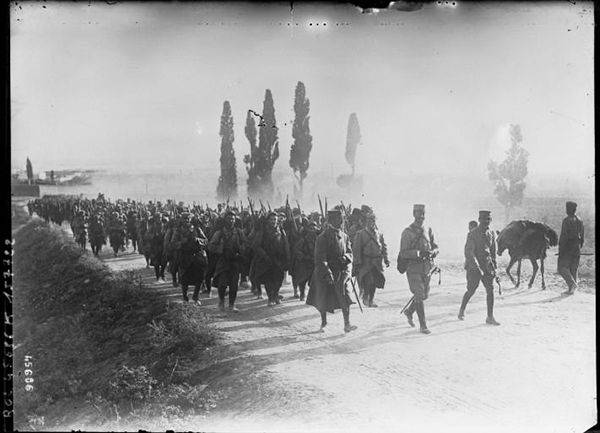
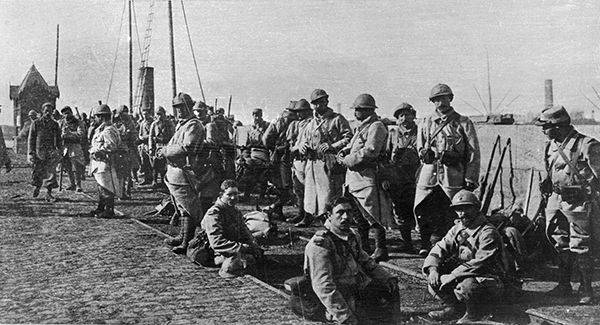
French soldiers in Thessaloniki
Central Powers Plans
At the end of November, the troops of the Mackensen army and the Bulgarians rose on the Kosovo field, and the German command raised the question of what to do against the troops of the Entente who had landed in Salonika and Greece. Many believed that there is reason to consider Greece an enemy of the Central Powers. With great difficulty, the head of the German General Staff, Falkenhain, managed to convince his opponents that it was impossible to fight with Greece. Moreover, neither the Central Powers nor Bulgaria then had the opportunity for a decisive blow to Greece.
Germany and Austria-Hungary had strong differences in plans. After the occupation of Serbia and the opening of the path to Turkey, the German command believed that the main tasks in the Balkans had been solved, therefore it was necessary to send most of the German forces from the Balkan theater to their Western front. The Germans believed that the Austrians should transfer the shock forces to Isonzo (Italian front) or to Galicia (to the Eastern front). The Austro-Hungarian command, on the contrary, believed that the strong German units had to remain as long as possible in the Balkans in order to assist him in the seizure of Montenegro, and then in advancing along Central Albania. In addition, the Austrians had strong disagreements with the Bulgarians, they were smoothed out only by the German presence. According to Berlin, the main task of Bulgaria, after the defeat of Serbia, was to cover the Thessaloniki front.
Immediately oppose the Anglo-French troops in Thessaloniki failed because of the problem of supply. Thus, the plan of the general offensive of the German and Bulgarian forces, under the general command of Mackensen, against the Anglo-French landing already in the middle of November 1915 was temporarily abandoned. It turned out that prior to the restoration of the railway from Nish to Kumanov, any possibility of feeding more troops into the Greek-Serbian frontier zone was excluded than was already concentrated with the Bulgarians. Even these troops could meet their needs for various supplies only with difficulty and irregularly.
At the end of November, in view of the incoming intelligence data that the Entente did not intend to hold Thessaloniki and withdraw the troops, the German command offered the Bulgarian high command to independently use the case. The Bulgarian command 5 December moved the offensive units of the 2-th army. Already on December 6, the allies fluttered and began to slowly withdraw along the valley of the r. Vardara. December 8 Allied right flank, where there were British, began to retreat. As a result, the right flank of the French was open, and they also had to retreat. The whole corps went to a new line of defense. Subsequently, the Allied forces, under pressure from four Bulgarian divisions, continued to withdraw to Thessaloniki, not being able to linger on their positions at Lake Doyran. By December 11, the expeditionary corps was already in Greek territory and retired to a fortified position in the area of Thessaloniki, which had already begun to be created from the beginning of October.
2-I Bulgarian army, according to the wishes of the German High Command, halted its offensive, not crossing the border of Greece, so as not to cause her performance on the side of the Entente. Also, the allies during the withdrawal thoroughly destroyed all roads, including the railway that runs along the valley of the r. Vardar, which made it difficult for the Bulgarians to organize the supply of the army. It was necessary to restore communication. In addition, the retreating Allied forces were reinforced by the newly arrived infantry divisions, and the independent offensive of the 2 of the Bulgarian army was dangerous.
By the end of 1915, the 1-I and 2-I Bulgarian armies reinforced by German units were located on the Greek-Serbian border from Lake Ohrid through the Monastery area to the front of Strumitsa, Enika, Petrich, Nevrekop. The 11-I German army, consisting of two Germanic and one and a half Bulgarian infantry divisions, was located near the Greek border from Noti to Belash Planina, north of Lake Doyran. Behind the 11 Army, in reserve in the area of Veles and Ishtib, was located the German Alpine Corps. The rest of the German units that took part in the campaign against Serbia were either located on holiday in southern Hungary or were deployed on the Western Front.
Campaign 1915. Balkan Theater. The rout of Serbia from October 8 to December 1. Source: Zayonchkovsky A. M. World War 1914 — 1918
Evacuation of the Serbian army
A further retreat of the Serbian army and people went under the most terrible climatic conditions and deprivations through Ipek, Prizren, Dibra and Elbasan towards Durazzo and Saint-Giovanni de Medua (Saint-Jean-de-Medua). Departing 1915 in December and 1916 in January along the mountain roads of Albania, the Serbs were forced to destroy or abandon wheeled carts and field artillery. Soldiers, due to the small number of pack transports, carried not only the remaining weapon, ammunition, equipment, but also wounded and sick comrades. The soldiers were on the verge of starvation - during the 10-15-day crossings in winter along difficult mountain paths, with a total length of up to 100 km, they received instead of bread only up to 200 of corn. In addition, it was necessary to repel the attacks of Albanian thugs, Chetniks, incited by the Austrian authorities. During this retreat, the Serbian army, which led, in addition, with the Austro-Hungarian prisoners (more than 30 thousand people), lost up to 55 thousand people. Civilian casualties are unknown.
Crowds of soldiers and refugees stalked to the passes of Montenegro and Albania. Exhausted, throwing the last property, carts, pushed the gun into the abyss. There were frosts in the mountains, snowfall raged, and refugees froze by the thousands, died covered with snow, fell from starvation. Local residents were afraid to help the refugees, as they feared typhus.
People were supported only by hope: to reach the sea and be saved. However, on the coast, death awaited them. Food, which the allies were supposed to give a lift to, was not there. And the Serbs on the coast did not receive any help. An eyewitness wrote: “Scutari and the whole Albanian coast is an extensive hospital where thousands died, which exhausted themselves with a retreat. The streets of Scutari are littered with corpses, German airplanes throw bombs at these unfortunates, and they do not even have the strength to raise a rifle. ”
The Allies set the Serbs here too. In Brindisi there were Italian steamboats loaded with food and everything necessary, but they did not go to sea. Italians were afraid of Austrian fleet and German submarines, Rome demanded that he be allocated warships for the convoy. At the same time, Italy itself had a strong fleet, but the Italians did not want to risk their ships for the sake of the Serbs. There was a British squadron in Malta. But the British, as usual, traded. They were ready to provide ships, but offered to take out Serbian troops to Egypt - they would defend the Suez Canal. What to do with civilian refugees was completely incomprehensible. Nobody wanted to take them, they also need to be provided with everything necessary, treated and fed. While long and tiring negotiations were conducted, people were dying in masses.
Germany's plans to force the Serbian leadership to a separate world failed. The Serbs, even departing from the same land, decided to continue the struggle. The Serbian command originally planned to give troops a rest in Albania, and then in the same place to reorganize the army in the area of the town of Scutari. But this project was not feasible due to two reasons: 1) because of the impossibility of a regular supply of food and everything needed (this was largely due to the inconsistency of the actions of the Entente powers); 2) threats of the appearance of the enemy from two sides: the Bulgarian army, which pursued the Serbs from the Monastery on Ohrid and Elbasan; The 3 of the Austro-Hungarian army of Kebes, which, after occupying the territory of Serbia, concentrated against Montenegro up to two corps, crowding the small Montenegrin army. Montenegro was doomed.
8 January 1916, the Austrians launched an offensive on Montenegro. She was finished in two days. 10 January 1916 The Austrians, assisted by the artillery of their line fleet, took possession of the position on Mount Lovćen (north-west of Cetinje), which dominated their port of Qatarro, and on January 14 occupied the capital of Montenegro, Cetinje. The next day, the Montenegrin government was fundamentally ready to accept the surrender. But under pressure from France mainly between Austria-Hungary and Montenegro there was a break in the negotiations. Montenegrin king 19 January went through St. Jovani de Medua to Italy, and from there to France, ordering the demobilization of the army. Part of the Montenegrin army dispersed under the ohms, part - was pressed to the sea and surrendered.
Now the same fate began to threaten the remnants of the Serbian army. Now the Serbs were threatened not only by the Bulgarian and Austro-Hungarian armies, but also by the Austrian fleet, which had the nearest base in Qatarro, as well as their aviation, which attacked the ports through which food was delivered to the Serbian army. The Serbian army could be pressed by the Austrians and Bulgarians to the Adriatic Sea and destroyed, and the transports sent with food (already in no hurry) could be sunk by the ships of the Central Powers.
This finally prompted the actions of the Entente state. The allies were worried, and suddenly the Serbs would also go to separate negotiations and capitulate. Germans and Austrians will officially establish themselves in the Balkans. Disregard for the younger allies will not have the best effect on relations with Greece and Romania. And Russia, which in London and Paris, after the defeats of 1915, practically did not listen, get angry, and can make contact with Germany.
As a result, the French government decided to transport the Serbian army in small warships and transports to Italy, Brindisi or Tarento, in order to land it on large steamers with an appointment in Bizerte (in Tunisia). In North Africa, the Serbian army was planned to be restored in order to quickly transfer it to Thessaloniki. However, the French commander-in-chief, Joffre, noted that the transport of the Serbian army to Bizerte would require large naval forces and would take a significant number of ships necessary to supply the expeditionary forces in Salonika. And he offered to evacuate the Serbs to the island of Corfu. On January 6, the French government finally settled on this decision, and on January 12, a temporary, without any dispute with Greece, the occupation of Corfu by the allies began.

Serbian army in Corfu
At the same time, at the suggestion of Italy, the Serbian army, exhausted, was offered to make a new march, since the port of Saint-Jovani de Medua, where parts of the Serbian army were concentrated, was in the sphere of operations of the Austrian fleet. The Serbs needed to go to the port of Valona, occupied by the Italians and covered with heavy artillery from the sea. To do this, the Serbian units (50 thousand soldiers and 10 thousand animals) had to go to Valona for more than a month on the way to 240 km, of which only 40 km on the roads, and 200 km on the road. The rest of the Serbian army was to be loaded onto transports in the port of Durazzo, also occupied by the Italians and covered with artillery from the sea.
As a result of this delay in the transportation of Serbs, from 250 thousands of people who could be evacuated in mid-December 1915, by the day of the beginning of the evacuation, i.e. by mid-January 1916, remained in the ranks of the Serbian army only about 160 thousand people with 80 mountain tools. The transport of Serbs to Corfu ended only 25 in February 1916. At the same time, on the island itself, due to the lack of agreement among the allies, there were no dwellings and a security system. Therefore, the Serbs continued to die on the way and upon arrival at the place. There were no cemeteries in Corfu for so many dead, so they buried them in the sea.
Together with the Serbian army, the Serbian high command and members of the government arrived on this island. The military catastrophe caused a serious political regrouping in the Serbian ruling circles. Prince Regent Alexander Karageorgiyevich, relying on his adherents - the secret officer organization “White Hand” - completely replaced the command of the army led by Radomir Putnik.
The Serbian army was restored to April 1 and decided to transfer to Thessaloniki. 30 in May 1916, the entire Serbian army, 120 with thousands of soldiers, combined into six infantry and one cavalry divisions, concentrated in the camps on the Chalcedon peninsula. On July 13, Prince Regent Alexander joined the command of this revived army.
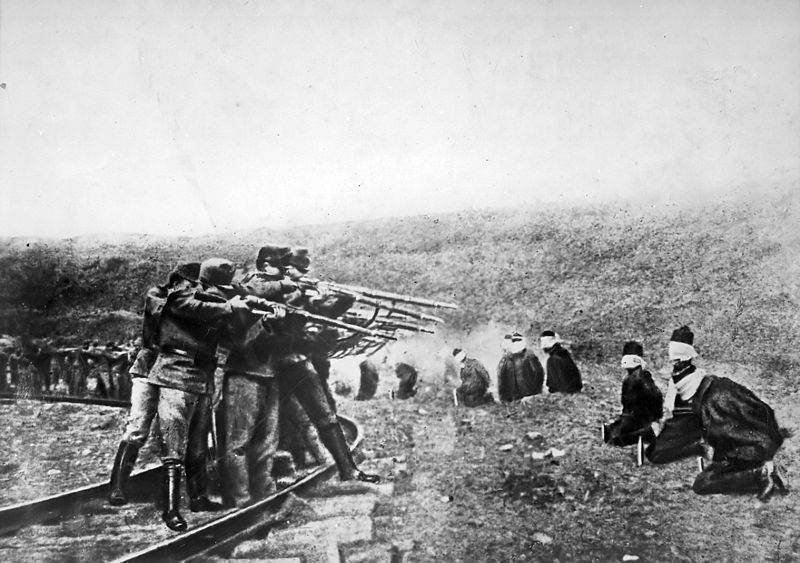
Austrian soldiers shoot Serb prisoners
Results
Germany solved the main tasks: the Serbian army was defeated, Serbia was occupied, the railway route to the Ottoman Empire was secured and a united front with Turkey was created. Austria-Hungary eliminated the flank threat from Serbia and Montenegro. As a result, part of the Austro-Hungarian troops were released for action against Italy and Russia.
Bulgaria took the side of the Central Powers, which hastened the defeat of Serbia. However, the fresh Bulgarian army was connected with the new Thessaloniki front. Due to the successful actions of the Central Powers, Romania again did not dare to enter the war. Greece also retained neutrality.
The establishment of a direct connection with Turkey by the Germans finally forced the Allies to curtail the Dardanelles operation, which freed up significant forces of the Turkish army to act on other fronts, in particular, against Russia. In addition, the Ottoman Empire and its allies had new opportunities for waging war on the Turkish fronts in Asia: the Caucasus, Mesopotamian and Suez (Egyptian), which diverted the forces and means of the Entente from its main fronts. Germany was able to receive strategic raw materials and supplies from Turkey. True, it turned out that Turkey’s reserves are less than what was thought. Due to the destructive domestic policy of the Turkish authorities during the war, the already weak Turkish economy finally stopped working.
At the same time, the Central Powers did not succeed in withdrawing Serbia from the war, concluding a separate peace with it and completely destroying the Serbian army by strategic coverage of the Austro-German and Bulgarian armies. The Serbian army, although suffering terrible losses, was preserved and evacuated, reinforcing the Allies in the area of Thessaloniki.
Due to the major miscalculations in England and France, the Entente had to significantly strengthen the expeditionary forces in Thessaloniki by weakening other fronts. The lack of a unified command against a common enemy did not allow the Allies to strengthen Serbia even before the onset of the Austro-German and Bulgarian armies, and then significantly alleviate the position of the Serbian army by active actions of the Anglo-French forces against Bulgaria and organize the evacuation at the end of 1915 g, saving thousands of Serb lives . France, England and Italy pulled the blanket over themselves.
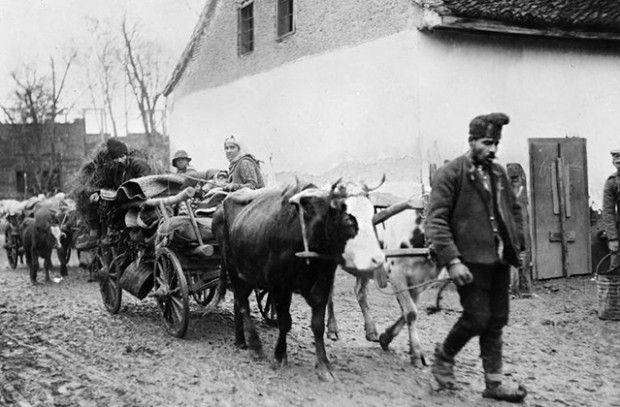
Serbian refugees
Sources:
Behind the Balkan fronts of the First World War. Ed. V.N. Vinogradov. M., 2002.
Zadokhin A. G., Nizovsky A. Yu. The Powder Cellar of Europe. M., 2000 // http://militera.lib.ru/h/zadohin_nizovsky/index.html.
Zayonchkovsky AM World War I. SPb., 2002.
History World War I 1914-1918 M.:, 1975 // http://militera.lib.ru/h/ww1/index.html.
Korsun N. Balkan Front of World War 1914-1918 M .: 1939 // http://militera.lib.ru/h/korsun_ng4/index.html.
Shambarov V.Ye. The Last Battle of the Emperors. M., 2013.
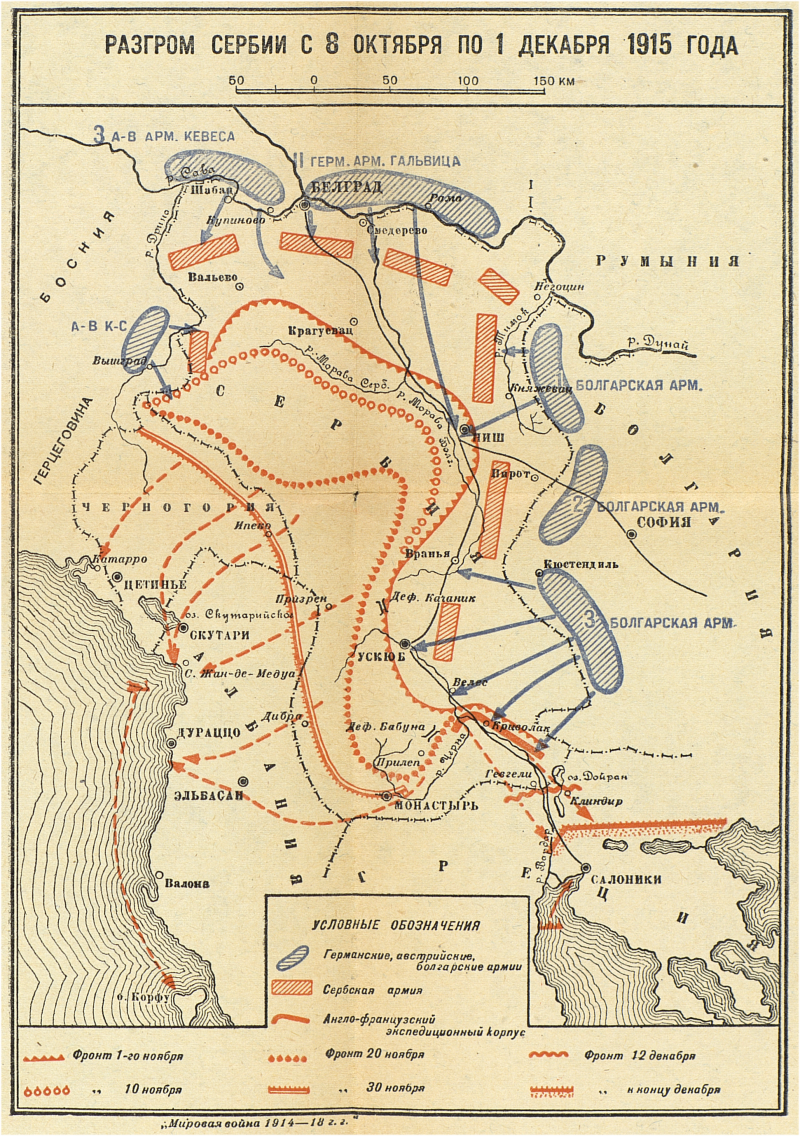
Information